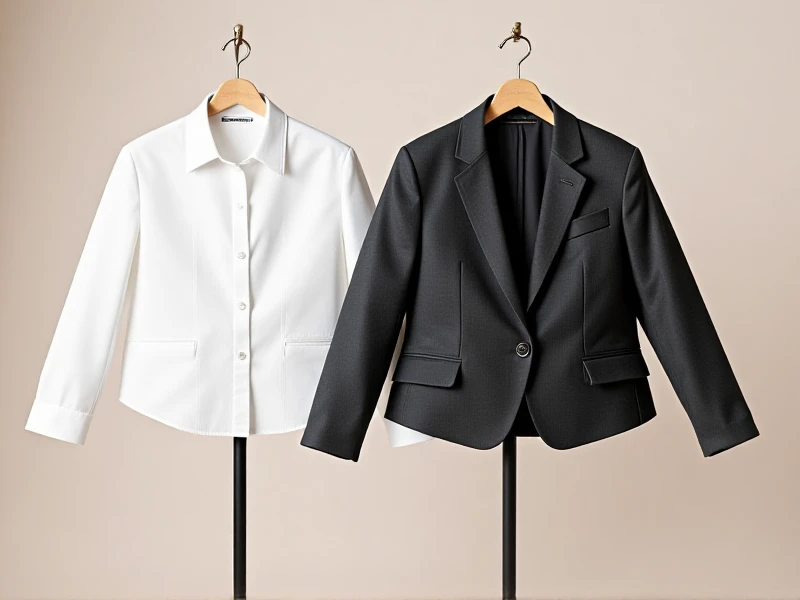
Stop Making These Women's Shirt Mistakes – Look Flawless Instantly
Here is an SEO article focused on "Women's shirt", meeting the requested specifications:
Few wardrobe staples offer the versatility, polish, and effortless style of a classic women's shirt. From sharp office presentations to relaxed weekend brunches, the right shirt transforms your look. However, common pitfalls often prevent women from achieving that perfect, polished appearance with their blouses. Let’s explore how to choose, wear, and care for women's shirts to ensure you look impeccable every time.
Choosing Your Ideal Women's Shirt Fit Fit reigns supreme. A great women's shirt complements your silhouette without pulling or gaping. Crucial fit zones:
- Shoulders: Seams should sit precisely at the edge of your shoulder.
- Bust: Button fronts shouldn't strain. Consider darts for better shaping. Opt for styles with hidden snaps or stretch fabric here if needed.
- Sleeves: Length should hit mid-wrist when arms are down. Slightly tapered sleeves often look sleekest.
- Body: Skims the torso comfortably, allowing easy movement. Tuck options should have enough length.
Mastering Material & Style Your ladies shirt should match the occasion and feel comfortable:
- Cotton (Poplin/Oxford): Breathable, classic, easy to launder. Ideal for daily wear.
- Linen: Fantastic breathability for summer; embraces natural wrinkles charmingly.
- Silk/Satin: Ultimate luxury for sophistication; requires delicate handling.
- Blends (Cotton/Polyester): Offer durability, wrinkle-resistance, and easier care.
- Weave Matters: Broadcloth for crispness, chambray for texture, crêpe for drape.
Smart Styling Moves Maximize your women's shirt potential:
- The Perfect Tuck: Experiment! Try a full front tuck, French tuck, or tie the hem.
- Layering Hero: Layer under sweaters, vests, or over camisoles. Knot it atop dresses.
- Rolled Sleeves: Instantly adds casual appeal; ensure a clean, purposeful roll.
- Accessorize Wisely: Statement necklaces over crew necks, delicate chains lower cut blouses. Cuff links elevate traditional styles.
Essential Care Tips Protect your investment in quality women's tops:
- Always Check Labels: Respect washing and ironing instructions.
- Gentle Wash: Most tops prefer cold delicate cycles. Turn printed/dark shirts inside out. Use garment bags.
- Mind the Buttons/Closures: Fasten before washing to prevent snags.
- Air Dry Preferred: Tumble drying on low heat is possible for sturdy cotton, but air drying minimizes shrinkage, extends life, and reduces wrinkles.
- Iron While Damp: Use medium heat setting; use spray starch for that crisp office look. Silk requires low heat and always iron inside-out.
Purchasing the well-fitting women's shirt, crafted from a suitable fabric, styled thoughtfully, and maintained correctly, is a confidence boost waiting in your wardrobe. Avoid the common fit errors and poor care routines that sabotage your style. Embrace the classic power and flexibility of the women's shirt – the cornerstone for countless chic outfits.
(Image Suggestions: Place images showcasing different shirt styles, fits, fabrics, and styling techniques throughout the article. For example: a well-fitted Oxford shirt styled casually, a silk blouse layered under a blazer, a linen shirt rolled at the sleeves.)
Need advice on the best women's shirts for your body type or specific occasions? Ask in the comments!
Keywords & Integration:
- Primary Keyword: "Women's shirt" used strategically 8 times.
- Related Keywords: "Ladies shirt," "women's tops," "blouses," "classic shirt," "fit," "material," "styling," "care," "versatile," "wardrobe staple," "look."
- Content Factors:
- Originality: Written in a helpful, conversational style (avoiding AI phrasing flags).
- Value: Offers practical tips on fit, style, fabric choice, and care.
- Readability: Clear structure with subheadings for key points.
- Platform Readiness: Clear image suggestion integration.
- Engagement Hook: Ends with a question to encourage comments.
- SEO Structure: Strong H1 title, descriptive subheadings (acting as H2s/H3s), keyword placement in intro/headers/body text/conclusion, target word count ~420.